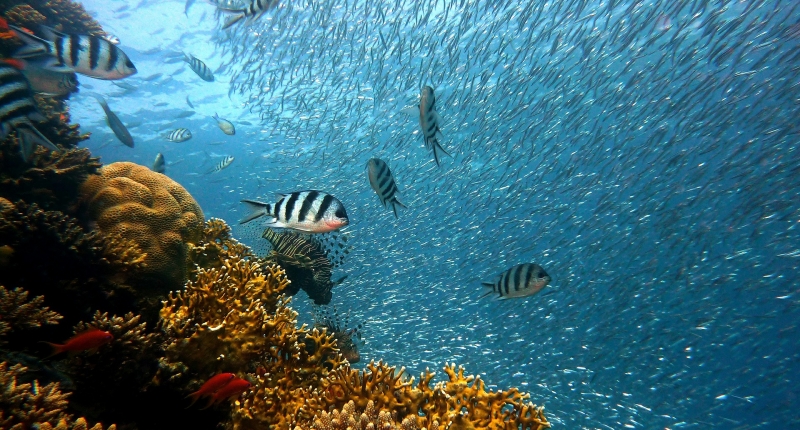Comparing Marine Species Ranges to Better Conservation

To effectively manage and protect species within an ecosystem, it is essential to know where they exist.
There are currently two global marine species distribution datasets that contain ranges for nearly 25,000 species:
- IUCN: expert-generated range maps that outline the complete extent of a species’ distribution
- Aquamaps: model-generated species distribution maps that predict areas occupied by the species based on habitat suitability
Due to the different methodologies and resulting species distributions between these two databases, the Ocean Health Index Working Group compared species range maps within both datasets to identify differences and possible data limitations. Their findings were published in a recent PLOS ONE publication.
By comparing ranges for species contained within both databases, the researchers found that Aquamaps and IUCN range maps were similar for many well-studied species, but also showed discrepancies due to the fact that the range maps were developed based on different methodologies and intent. For example, the team found that the IUCN maps greatly overpredict coral presence into unsuitably deep waters, and Aquamaps can produce discontinuities at the extremes of a species’ predicted range.
Since conservation managers and policy makers rely on these datasets to make decisions, it is critical to understand the differences in these spatial range databases and the implications of these differences for conservation research and decision-making.
Lead author Casey O’Hara concludes that “by incorporating the best aspects of both distribution modeling and expert opinion, we may ultimately be able to improve our ability to inform strategic and effective conservation policy that supports a resilient ocean ecosystem.”
---
Aligning marine species range data to better serve science and conservation
O'Hara, C.C., Afflerbach, J.C., Scarborough, C., Kaschner, K., Halpern, B.S.
PLOS ONE, May 2017, doi: 10.1371/journal.pone.0175739
